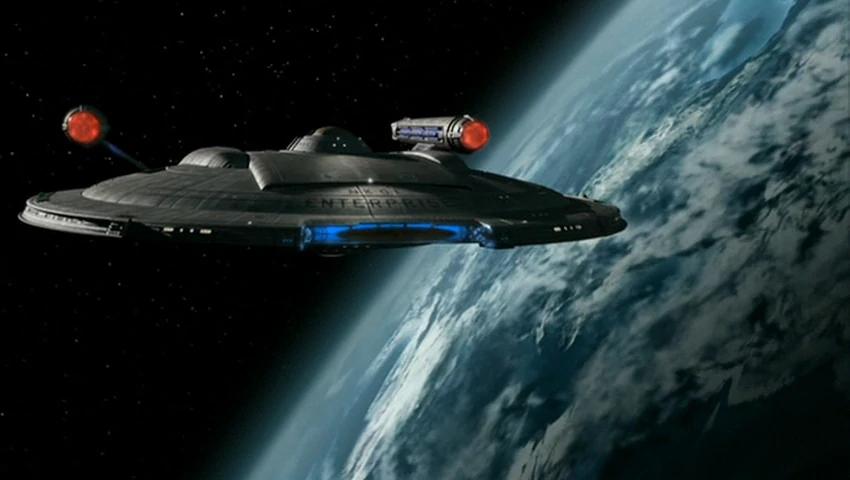Apparently, the Phoenix doesn't have a navigational deflector at all.
The navigational deflector is a very important part of a starship in Star Trek, its purpose is to generate a kind of force field to, well, deflect dust, small rocks and other minor debris, in order to prevent collisions with the ship, mainly when travelling at warp speed. This system is related but not the same thing as the Deflector Shields, which have a more distinct tactical purpose.
Given its function, it is located in the from part of starships, and it is usually a big and recognizable part of the hull: I think that it is safe to say that, if this device is present, it should be well visible and identifiable.
Anyway, if we look at the Phoenix, no such device is clearly visible. I think that there are two important factors that we must consider here:
- The Phoenix was not designed and built entirely from scratch, but was a modified tactical missile; more or less, it was nothing more than a missile with a cockpit and the warp engines attached to it. It is unlikely that it had other more complex systems (As an example, very probably it did not even had systems like an Inertial Damper or advanced Life Support, that are instead the norm for more mature ships of subsequent eras).
- And, the most important thing, it was a prototype, it was literally the first human ship to equip a warp engine. This implies that it was an experimental machine, not one meant to be regularly used.
When you are pioneering a new technology, it is rather difficult to think ahead every detail and every possible implication about its practical usage; the absence of a navigational deflector could simply mean that, at the time, being this a brand new technology, could mean that nobody thought about the risk of a possible collision and how to prevent them, or that they had not the technology or the resources to design a create this device (a warp engine and a deflector are not the same thing and are not based on the same technology, it is perfectly plausible
to have one without having the other).
Even subsequent experimental ships don't seem to have this kind of equipment: the NX-Alpha and NX-Beta, two experimental ships belonging to the NX Program (that will eventually lead to the NX-Class starships), in example, don't seem to have a deflector as well (and they look a lot like the old Phoenix, they seem to be a direct evolution):

NX-Alpha

NX-Beta
If we have a look at the NX Class, we can see that at this point in history, this kind of device was finally implemented as a standard equipment of the ships:
 NX-Class
NX-Class
It must be noted that prior to the NX Program, Earth starships were capable to travel at maximum at Warp 2, only the culmination of the project with the NX-Class made them capable to reach Warp 5.
It is possible that with the relatively slower speeds prior to the NX Program, minor debris were not considered to be a problem (there were relatively few ships flying around at that time, we are still talking about a pioneer era), and that only with Warp 5 a new deflector system used to protect the ship from this kind of hazard was developed.
As an example from real world, have a look at some of the first automobiles, like Benz Patent-Motorwagen or Ford Model T: they are not equipped with all the devices and sub-systems of a modern car, they don't even have the looks of modern cars; most of the technology that improved them form those early days to our time, was developed and introduced gradually. By analogy, even systems on Star Trek ships can be considered as product of a, ongoing development and refinement of technologies.





